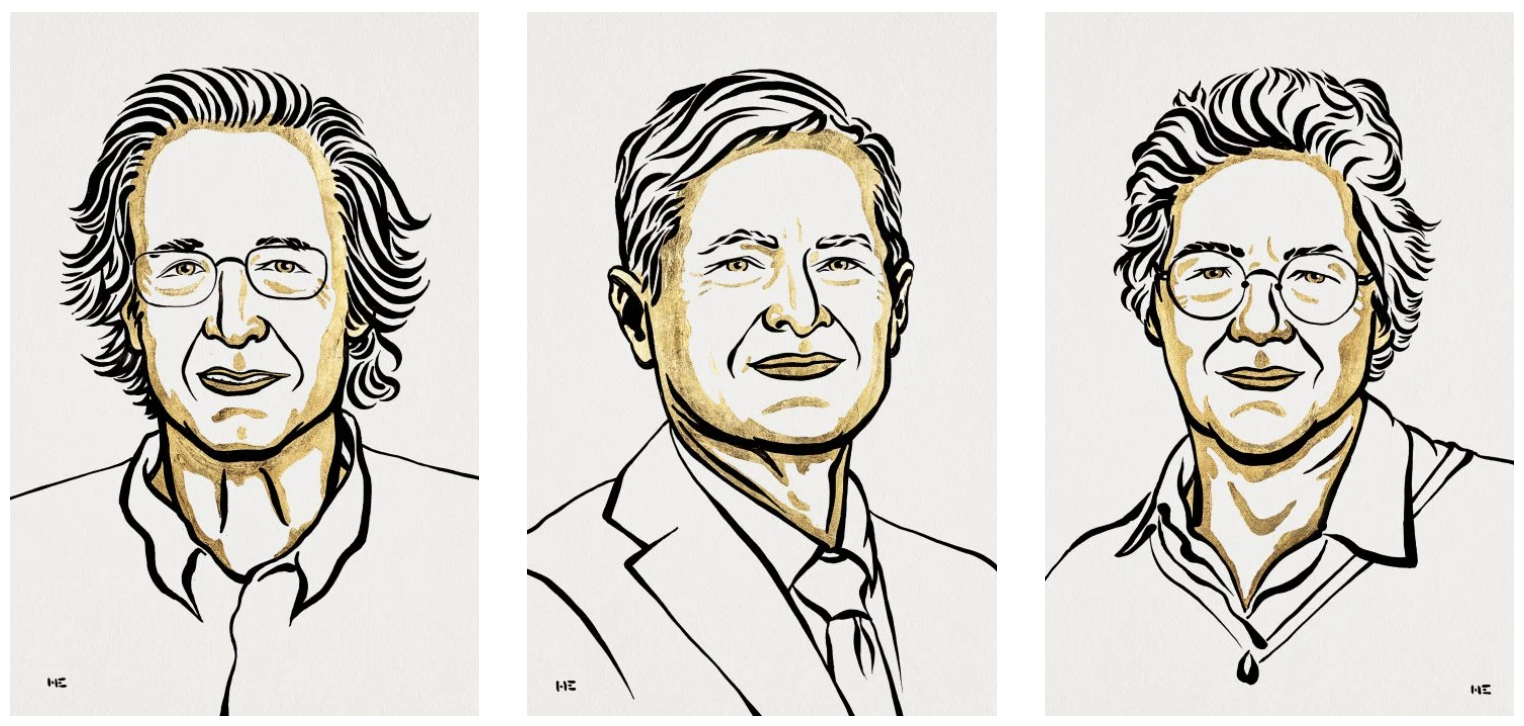
Left to right: Pierre Agostini, Ferenc Krausz, Anne L’Huillier. Artwork by Niklas Elmehed.
The Nobel Prize was given between these three people for their combined work in generating attosecond extreme ultraviolet (XUV) pulses through high harmonic generation. Laying the groundwork was Anne L’Huillier, who in 1987 discovered that XUV pulses could be produced by focusing a laser into a gas. Following this, in 2001 Pierre Agostini and Ferenc Krausz respectively proved that you could generate and measure XUV pulses that were only attoseconds long (one quintillionth of a second). Agostini showed that you could produce these pulses consistently, and Krausz showed that you could isolate single pulses.
Conventional ultrafast laser technology enables us to take snapshots of incredibly fast-moving objects without blurring, thanks to their ability to produce pulses of light as short as tens of femtoseconds long. This means the laser is able to capture the atoms within the object moving – for example, as a molecule vibrates or breaks apart. However, to really understand what happens, we sometimes need to follow the electrons too.
The work rewarded by this Nobel prize allows us to create pulses in the attosecond range rather than the femtosecond range (so 1000x shorter!). This allows us to be fast enough to study even the fastest motions of electrons. Attosecond science thus enables us to understand how electrons move and change energy in response to light. This is not only important for fundamental research, but is also potentially significant for us all, as photosynthesis and photovoltaics are both processes that start with electrons responding to light.
Emma Springate, Artemis Group Leader said;
“It is thanks to Agostini, Krausz and L’Huillier’s work that we can use Artemis to produce XUV pulses through high harmonic generation. Artemis uses femtosecond pulses of XUV to study how electrons move and change energy to understand the deep inner workings of extremely fast reactions in chemistry, and the response of novel materials to light. Using femtosecond rather than attosecond XUV pulses makes the experiments simpler to design and carry out, and more amenable to studies of chemistry and materials science.”
XUV will also form part of the capabilities our new £17M project,
HiLUX, will deliver. This will be a major transformation of the ultrafast laser and infrared, Raman and XUV spectrometer infrastructure in the CLF.
The Nobel Prize winners were rightly rewarded for their transformational work, and we thank the many other scientists who have made outstanding intellectual and experimental contributions in this field as well.
